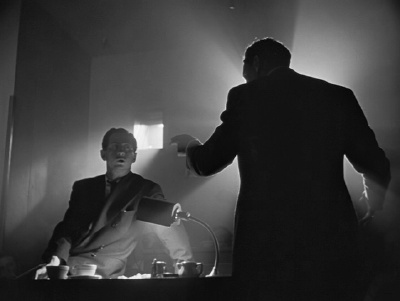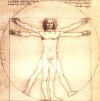Well, pawing through the OnDemand to see what there is to see, we settled on Dig! Man. Well, the movie was interesting enough, and actually kind of fun… but the people? Good gosh. It is a documentary about the relationship between the Dandy Warhol’s and the Brian Jonestown Massacre, the bands leaders Courtney Taylor-Taylor (ummm…) and Anton Newcombe and the success or lack thereof that these bands had. The movie spans 7 years and I couldn’t tell if it was one coherent piece or if these bands had been making home movies for years and someone put bits of them together. Regardless, I had of course heard of both bands, but I hadn’t ever paid them much mind. The BJM I always though had a fun name and I’d see their records around but I didn’t know anything else about them. The Dandies well, I never heard them (maybe in an ad once) but I imagined them to be some more run-of-the-mill poppy indie rock hipsters. Some of my imaginings turned out true, but I had some things to learn.
BJM are nothing like the punkrock/garagerawk band I had imagined, instead being an irritating wanna-be 60’s band who seem to revel in their originality, though to me it seems like they just get high and pump out some pastiche of the Beatles, the Rolling Stones and the Doors (christ, even including a near reenactment of the Beatles “Sitar lesson” photos). They go through these motions until their frustrations (maybe due to trying too hard at genius) lead to fistfights, yelling and walkouts. Maybe I shouldn’t blame the whole band, as they were led by the most gratuitously lame “I think I’m Jim Morrison” dud named Anton, who, sadly for him, is not Jim. The movie is basically about what a loser and an ass he is, being contrary, “crazy” and picking fights with anyone he can. For two hours that’s what the movie is about. On the other hand, the Dandies are basically some reasonably normal folks who decided to get a band together and try for some success. It’s kind of regular, but fun, pop rock. At one point they reminded me of a less-edgy version of The Breeders, that felt strange when one of the Deals made an appearance in the movie. And funny enough, Genesis P-Orridge is all over this movie.
But though most of the characters are either a bit boring and full of themselves or irritating and full of themselves, watching them go through their two, very different, takes on the “cool rockstar” life is pretty entertaining. it is a strange and awkward friendship between the two with Courtney finding Anton to be inspiring and Anton so terribly jealous of Courtney that you almost feel bad for him. While the Dandies are in the background working towards getting what success they could, in the foreground is always Anton doing one dull “look how different and self-destructive I’m am!” routine after another. It is an interesting comparison between the “right” (well, sort of commercially right) and the wrong (in pretty much every sense) way to run a band. But the old “look how nutty I am” thing went out of style the first time I saw one of Manson’s parole hearings. And the ridiculous song and dance that seem to be the dopey antics of these types of free-wheeling musician hipsters gets stale with me pretty quick. Thirty year olds who shoot up all the time, dress in terrible old fashions that looked ugly even when they were originally in style and act like they are still in junior high smoking weed behind the gymnasium are a tiresome lot. Of course, as I am still a sucker for this town in some ways, I did enjoy the footage of Portland
Finally the moment came to watch the Citizen Kane disc that I’ve had for a while. But I hadn’t seen it entirely since junior high. A number of years ago I tried watch it on PBS, but they kept interrupting it for a pledge drive… this is not a movie that is well interrupted. It is certainly a fine movie and it seemed much shorter and more involving than I remember.
Citizen Kane has a lot going for it: a great cast, great production, a great and involving story… But the cinematography is really what grabs. The composition of the shots is really incredible with some intriguing camera angles and sets reminiscent of the expressionist era and some wonderful uses of lighting and smoke and shadows, which combine to instill a noirish sense of atmosphere. It even uses some conventions that really grab your attention, such as not showing the face of the actor speaking, instead obscuring the face with smoke or filming the character from behind. Welles also includes nice uses of deep focus that, at times, made me feel like I was watching an optical illusion. Some of these scenes really change ones perception of the scene and ones involvement with the story. It feels both like an ideal film of the period, and yet well ahead of its time. Not only is it a wonderful and grand film, but the fact that Welles was 25 when the co-wrote/directed and starred in this film makes it all the most astounding!
For the action itself, Orson Welles owns the scenes, but the film also features some strong supporters, including the wonderful Joseph Cotton in his first feature film role and even a brief time with Ray Collins (Lieutenant Tragg)!
Kane is the the story of a young boy whose mother becomes suddenly rich and it is sort of a composite of the life of Orson Welles and the life of William Randolph Hearst. His parents die and he grows into a freewheeling trust fund kid (whose trust fund is the words 6th largest fortune) who decides that it would be fun to run a little newspaper that he happens to own. He turns the newspaper into a muckraking political organ for the “little guy” and as its success expand and his wealth and fame expand, he falls into politics and basically grows up into just another lonely and conservative old rich man, living in a cold and failed palace of hope for a happiness and contentment that just isn’t there. The film is played out after Kane’s death as the story of a journalist seeking out the remaining people who knew him in an attempt to decipher the meaning of Kane’s last word.
The set also includes The Battle Over Citizen Kane, a companion documentary that was quite good. It is more a joint biography of Welles and Hearst, and it really showcases how blatantly based on Heart the movie was. Welles co-writer was someone quite familiar with Hearst who knew him and had spent time at San Simeon, which really shows.

the screening room

the screening room 2









